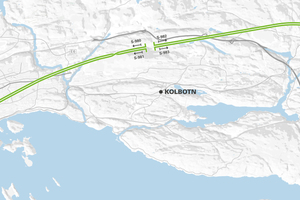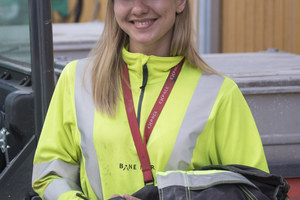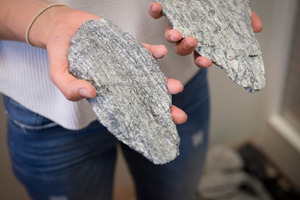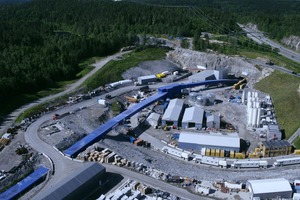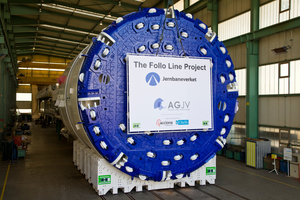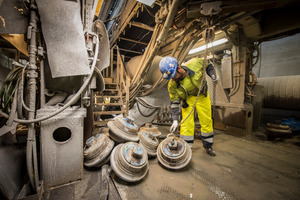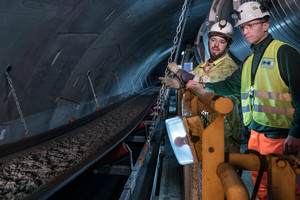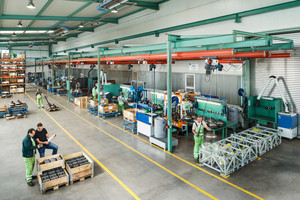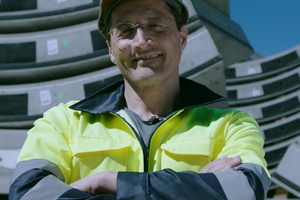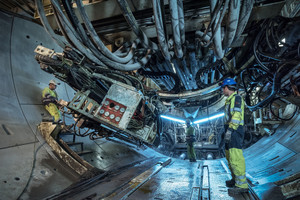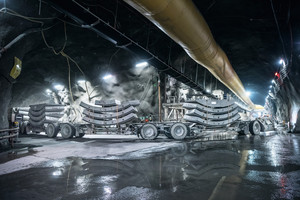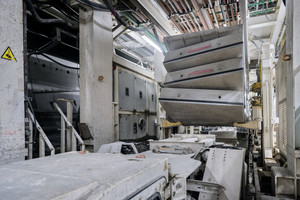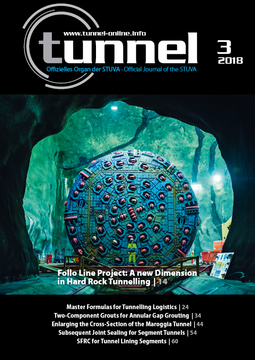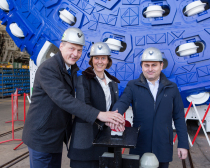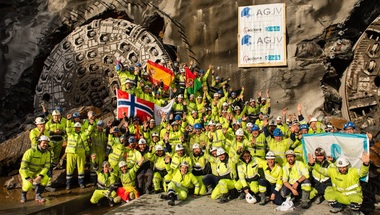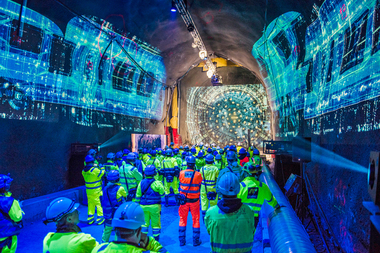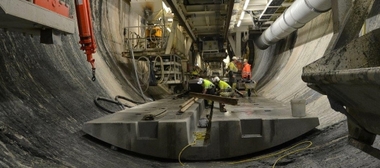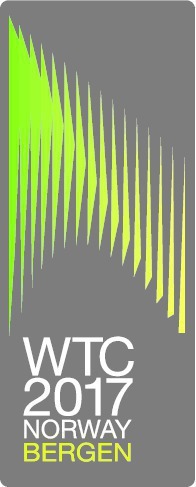Follo Line Project: A new Dimension in Hard Rock Tunnelling
The Follo Line Project in Oslo is a revolution for tunnel-rich Norway. Previously, tunnels have mostly been built the traditional way with explosives. For the largest infrastructure project in the land of the fjords, tunnel boring machines are now being used. Since late 2016, four Double Shield TBMs from Herrenknecht have been simultaneously biting their way through the toughest hard rock for a new railway line (Fig. 1).
Norway’s longest Railway Tunnel
Agnethe Hoff Finnøy’s site office is bare, the only wall decoration a photo. In it she stands smiling between the cutterhead of a tunnel boring machine (TBM) and the rock of Oslo. Every day the thirty-year-old geologist for Norwegian railway company Bane NOR drives into the mountain to check and document the status of the advance. “My friends ask me with amazement how such a TBM operates. When I tell them the machine presses against the rock, rotates and the rock breaks, they can hardly imagine that it actually works,” says the geologist and laughs. Then she passes the visitor an almond-shaped, palm-sized chunk of stone: “Gneiss, a particularly hard rock.” The chunk is heavy in the hand. “The TBMs crack the hard rock into chips like this,” says Hoff Finnøy and smiles: “It works wonderfully!” (Figs. 2 + 3)
This finding is relatively new in Norway. Hoff Finnøy works on the Follo Line, the largest infrastructure project in the tunnel-rich land of the fjords. „Probably no state has more tunnels than Norway. For every inhabitant, statistically there are 1.3 meters,“ says Anne Kathrine Kalager (Fig. 4), Bane NOR‘s project manager for the main tunnelling section on the Follo Line Project. Previously, tunnels in Scandinavia have mostly been built with the traditional drill & blast method. Only in a few hydropower projects smaller tunnel boring machines were used. The best way to deal with the indigenous rock is by means of explosives, because tunnel boring machines would have a tough time with it – for a long time that was the prevailing opinion. The Follo Line brings movement into this tradition. Using mechanized tunnelling technology, the large-scale project is creating the longest railway tunnel in Norway and eliminating a bottleneck in the transport network of the future. The new twin tube will run 20 km from the municipality of Ski to the south of Oslo right into the center of the metropolis – with an open section at both ends, 22 km in total. Four million cubic meters of rock have to make way – almost double the volume of the Cheops pyramid. In future commuters will save eleven minutes on the short route, half of the current travel time.
One central Point of Attack
“If we want to stay fit for the future we can’t just say: we’ll do it the way we’ve always done it,” says project manager Kalager. “We must always keep looking for the best methods – and as it turns out, in this project TBMs have decisive advantages.” To carry out the project as quickly as with mechanized tunnelling, for drill & blast a total of seven jobsites would have been needed in the metropolitan area, some of them difficult for trucks to access. “So drill & blast tunnelling would have meant a huge burden on the traffic and the many residents living near the jobsites.”
In contrast, the TBM solution gets by with only one central point of attack. Two 900 m long access tunnels connect the large Åsland jobsite (Fig. 5) on the surface with two underground caverns. From there, two machines each bore south and north initially served as assembly site for the four TBMs and are now used as logistical nodes for the drive. The large jobsite is linked directly to the E6 highway. There are no nearby residents to be disturbed by the years of construction work. “All these advantages were decisive for the TBM solution,” explains Anne Kathrine Kalager.
When the project is completed, the tunnel portal will be located just a few hundred meters from the main railway station. Kalager lets her gaze wander to the harbor and the spectacular opera with its glass facade and bright Carrara marble, building cranes, new residential blocks and modern office buildings right on the water: Oslo is booming. „In recent years, we Norwegians have learned to think more and more about the future,“ says Kalager. For example, every second new car in Oslo is electrically powered, and throughout Norway the electricity for this comes almost entirely from emission-free hydropower. The country does not touch its treasure from the North Sea oil of about 160,000 euros per inhabitant, it invests the gigantic sum of 832 billion euros in a state fund to secure prosperity for future generations. „Half the Norwegian population lives within a radius of 100 kilometers around the capital,“ emphasizes Kalager. „Thus the Follo Line also strengthens the social foundation for the future. Meanwhile it has become sexy to commute to the office by train. Instead of getting stuck in congestion, you can work or relax.“
Planned Breakthrough by the End of 2018
For the trains to whizz through the mountain at up to 250 km per hour from 2021, the breakthrough of the two tubes must be achieved by the end of 2018. For this reason Fernando Vara (Fig. 6) reaches for his smartphone every morning at 6.30 a.m. „So in the first minute after waking up I can see if the day is going to be stressful,“ says the Spaniard with a grin. The 47-year-old is the project director of the construction joint venture, which is made up of the companies Acciona from Spain and Ghella from Italy. Early in the morning, Vara first checks the WhatsApp group, where the night shift reports the progress of the previous day. The Double Shield machines can simultaneously bore and line the freshly bored tunnel with rings made of 1.8 m wide reinforced concrete segments. „Ten rings are good when the geology is difficult. But 14 or 15 rings are normal,“ says Vara. So that usually means an advance of 27 m per day and machine.
In the extreme hard rock with up to 300 MPa compressive strength, such advance rates can only be achieved with particularly strong and robust machines. On each of the four Herrenknecht TBMs, 13 engines with 475 horsepower each drive the 265 tonne cutterhead. Strong vibrations, dust and deafening noise are the consequences, that takes its toll on people and technology. Sometimes Vara reads in WhatsApp that a machine has not progressed well during his nightly rest. For example, if the fissures in the rock in front of the cutterhead are full of groundwater, which frequently happens in the southern sections. Then, in the daily morning maintenance shift, a liquid cement mass is injected into the fissures to displace the water. To prevent an unnecessary waste of time producing the required holes, extra-strong drilling rigs are installed on all TBMs. But even with events like this, project director Vara can continue managing the jobsite calmly, because the project is on schedule. „This is also thanks to Herrenknecht,“ says the engineer, who has spent his entire working life to date on Acciona tunnel projects. „I‘ve worked with Herrenknecht throughout my career. So I can say that the company is good at sticking to schedules.“
TBMs started ahead of Schedule
The factory acceptance (Fig. 7) for the first TBM in March 2016 took place eleven months after the order was received. There were only 19 months between the signing of the contract and the fourth and last machine beginning operations in Oslo in November 2016. At times some thirty Herrenknecht service experts were on site at once actively supporting assembly of the machines. „So we were four months ahead of the official schedule with the TBM launch,“ says Vara, who is responsible for the daily work of around 500 people on the large-scale jobsite. Being under time pressure, potentially excessively overworking the machines and thus risking major damage with long downtimes would be a nerve-racking undertaking, he emphasizes. „But thanks to the head start in the schedule we can now work with great concentration and yet also relatively relaxed. We are making even better progress than expected.“ According to the project partners the four TBMs had excavated two thirds of the total disstance by March, 20., 2018.
Cutter Management
The advance stands and falls with the quality of the excavation tools. The cutter discs are pressed against the extremely abrasive rock with up to 32 t of pressure on 70 concentric tracks. They are made of special steel, measure 19 inches in diameter and weigh around 190 kg, with the center cutter discs reaching a weight of 372 kg. The wear is enormous. During the entire project, about 6000 disc cutters have to be changed on each machine (Fig. 8). “Even the tiniest improvement to the discs counts. Because changing means downtime”, explains Vara: “If optimal cutter management allows us to complete just one more tunnel ring per day and machine, this ultimately adds up to put us two to three months ahead of the planned project time.”
Among other things, engineer Luis Paliza Cuartero (Fig. 9) is responsible for Herrenknecht‘s cutter management in Oslo. He ensures that the removed, worn disc cutters are loaded onto trucks and transported to the Herrenknecht plant 1500 km away in Schwanau. There they are completely overhauled for reinstallation (Fig. 10).
„In close cooperation with our customers we feel our way ever closer to the optimal parameters for the disc cutters,“ explains the Argentinean. „We improve details on the bearing and try out the effects of different lubricants and seals.“ Up to 50 refurbishment experts at the Herrenknecht headquarters work on the professional rebuilding of the disc cutters so there are always enough fresh excavation tools available in Åsland and the contracting joint venture can take care of other tasks.
„This process works like clockwork,“ reports Francesco Giampietro happily (Fig. 11). As a long-time TBM manager with Ghella, with a total of 140 employees he is responsible for ensuring the four 150 m long power packs are tunnelling at all times if possible. „I‘ve never had to deal with such hard rock in my whole career,“ says Giampietro with a laugh.
Specialists on Site
His laugh is that of a man who knows he is facing a great challenge but is also confident he can cope with it. „Hard rock and four machines at the same time: that means we all have to work together very closely and trustfully to be successful,“ emphasizes Giampietro. On average, seven Herrenknecht specialists are on site every day to assist the TBM manager and his people with incidental maintenance and repairs, but also to support the advance.
Precisely because the extremely hard and abrasive rock means sometimes physical limits are reached, „logistics are extremely important,“ Giampietro emphasizes. „Not only the machines have to run with precision, but also the supply of first-class tools and spare parts – for four machines at once.“
Herrenknecht engineer Luis Paliza Cuartero supports this mammoth task with his service colleagues on site. On behalf of the contracting joint venture he has an eye on ensuring that the strictly timed maintenance plans are adhered to, the hoses of the hydraulic circuits are in good condition, the electrical components are not soiled, engines and pumps are lubricated at the specified intervals: „It‘s in everyone‘s interest that the machines are kept in the best possible condition over the entire distance of the drive. That‘s why we are so attentive, sometimes suggest sensible preventive maintenance to the customer on the basis of experience and are always at his side.“ (Fig. 12)
Special Solutions for lean Jobsite Logistics
So-called multi-service vehicles (MSVs) ensure a demand-oriented supply of disc cutters, spare parts and in particular reinforced concrete segments for the tunnel lining (Figs. 13 + 14). With four trailers coupled to each other, these special vehicles designed and built by Herrenknecht subsidiary TMS can load up to 125 t and thus tow the concrete segments for two complete segment rings to the TBM in one trip. The rubber-tired vehicles can be used very flexibly on the jobsite. Inclines and declines of up to 10 % and the tightest curve radii of 15 m are not a problem – the basis for ensuring the continuous advance stops as seldom as possible.
„But what are the machines without the people?“ asks Anne Kathrine Kalager, the proud Bane NOR project manager. She has her office on the jobsite, she wants to feel the pulse of the project every day, carry out inspections and talk with those involved. „Because I am constantly on site I can say: we are very satisfied with the cooperation of everyone involved. The Herrenknecht colleagues are only meant to be on site as supervisors. But I also see them giving a hand as well. That convinces me that Herrenknecht and the Acciona-Ghella joint venture jointly take responsibility for the performance, and with this team we will achieve the goals we have set ourselves.“
TBMs – a realistic Alternative in large Projects
In Norway, where the whole industry had long been focused on drill & blast while smaller TBMs only have performed in water projects, many assessments and analyses were needed before the decision for the TBM as the best solution was made, recalls Kalager. She expects the Follo Line to send a signal for further projects in Norway. „In future TBMs will be a realistic alternative in large projects, even in our extreme hard rock.”

